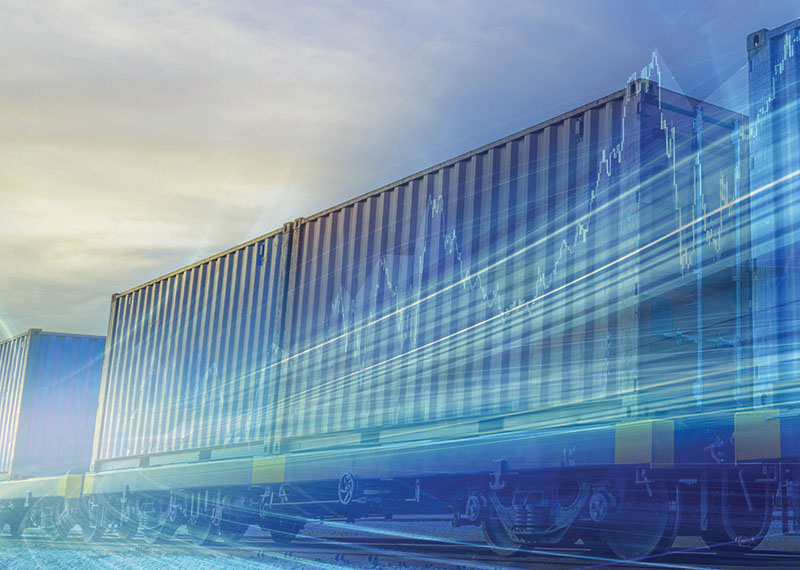Nationalize the railroads?
In the 1980s, it was the granting of 48 state authorities by the ICC that opened the trucking and airline industry to competition. This could work for rail—not just local reciprocal switching, but national reciprocal trackage rights might enable competition over shared lines. Let’s reimagine rail.
The Administration’s Executive Order encouraging competition in the rail, ocean and other industries is a belated acknowledgment that we have a problem in these essential industries.
In the 1800s, we gave the railroad companies thousands of miles of land, including riverfront along some of our most important arteries, in order that they could build out a rail system.
From the very beginning, there were commercial interests that saw the future—a national, integrated, private set of steel roads controlled by very few executives. The Interstate Commerce Commission (ICC) was created after beleaguered shippers threatened politicians with expulsion.
The ICC was later abolished and replaced with only a nominal regulatory agency, The Surface Transportation Board (STB), an organization that has already demonstrated an aversion to regulating the major railroads.
I have read with interest an increasing number of references to a “North American rail oligarchy.” As a large rail shipper for many years and a former billing auditor for a Class 1, I witnessed the upgrading of executives I interacted with over a couple of decades. Gone were the relationship folks, and in came the smart, often non-rail folks who saw the opportunity to realize the dream of the early rail barons.
Consolidate, reduce track to reduce capacity and possible competition. Guess how many cities in North America have only one railroad serving them. Then raise prices in excess of inflation and develop a “premium” service brand in two areas. First, reduce options for captive shippers through consolidation then cease paying for mileage usage on private rail cars. Second, increase focus on intermodal with the idea of capturing some of the much larger highway market.
The highways were created by building on top of public lands. Users pay gas and tolls to use this infrastructure. Airlines pay to use the skies and airport terminal gates. Pipelines operate through a right-of-way license. Rivers are public and barge operators pay to use them. The railroad land should be public, and competition enabled for use of this key asset.
This is the way it is in most of the western world and certainly in Asia. The argument that railroads have plenty of competition with 75% of transport on other modes is faulty logic at best. It basically admits that 25% of all freight is carried by less than seven companies, with four non-overlapping service area companies controlling more than 80% of the rail freight.
The railroad companies are not nefarious, but the progress of transport industries seem to follow the pattern of early growth, later consolidation and eventually needing to be reined in by pressure of new technology or regulation.
If the railroads operated over public lands, then those lands could be used for new passenger and freight infrastructure as well. There has been a call for regulation such as open reciprocal switching, allowing nearby railroads to compete for a captive shipper’s traffic.
The question remains: Could we do more than open reciprocal switching to captive shippers, a ruling held up by the STC for more than a decade, and think big?
In the 1980s, it was the granting of 48 state authorities by the ICC that opened the trucking and airline industry to competition. This could work for rail—not just local reciprocal switching, but national reciprocal trackage rights might enable competition over shared lines. Let’s reimagine rail. •

Article Topics
Rail & Intermodal News & Resources
Q1 intermodal volumes are up for second straight quarter, reports IANA 2024 State of Freight Forwarders: What’s next is happening now STB announces adoption of final reciprocal switching rules Norfolk Southern-Ancora Holdings proxy battle accelerates Intermodal growth volume remains intact in March, reports IANA Shipment and expenditure decreases trend down, notes Cass Freight Index Four U.S. railroads file challenges against FRA’s two-person crew mandate, says report More Rail & IntermodalLatest in Logistics
S&P Global Market Intelligence’s Rogers assesses 2024 import landscape Pitt Ohio exec warns Congress to go slow on truck electrification mandates Q1 intermodal volumes are up for second straight quarter, reports IANA Supply Chain Management Software: Build the foundation, deliver the value 2024 State of Freight Forwarders: What’s next is happening now Ryder opens up El Paso-based multi-client facility logistics facility Autonomous mobile robots (AMRs) on a mission to automate More LogisticsSubscribe to Logistics Management Magazine

Find out what the world's most innovative companies are doing to improve productivity in their plants and distribution centers.
Start your FREE subscription today.
May 2024 Logistics Management

Latest Resources
















